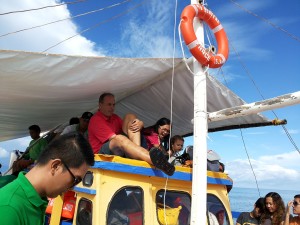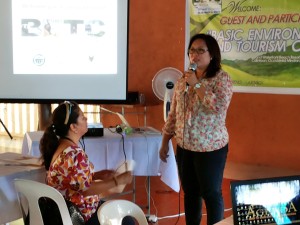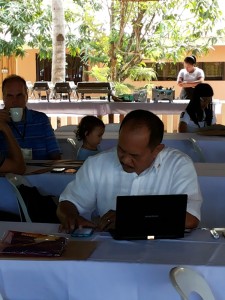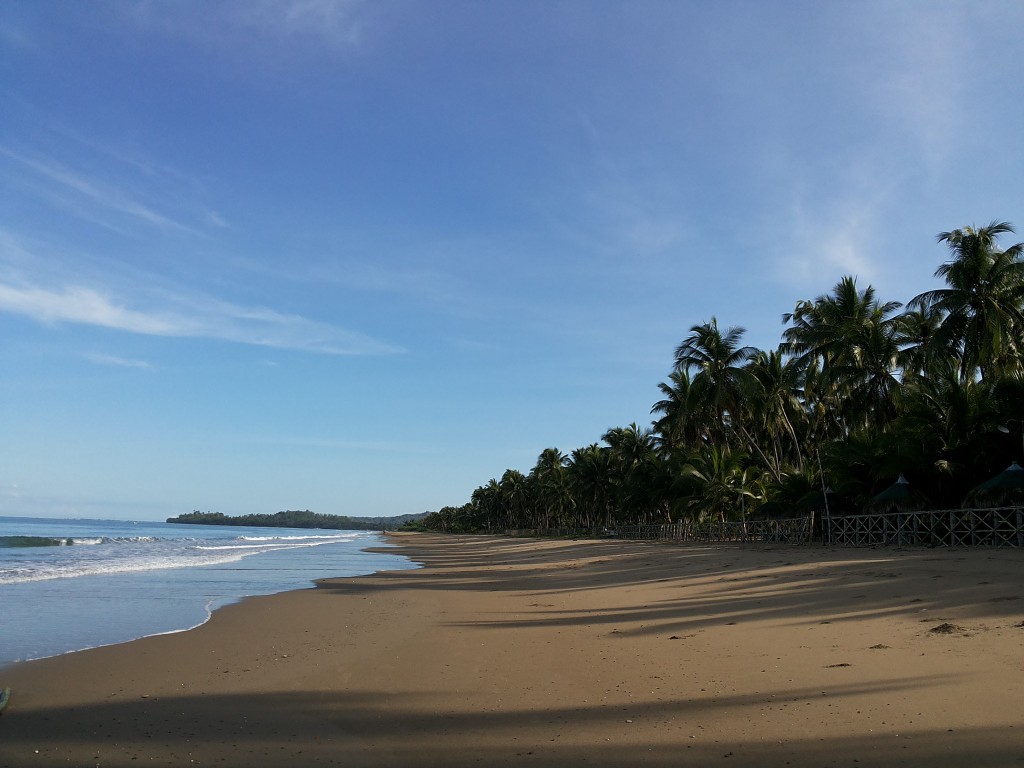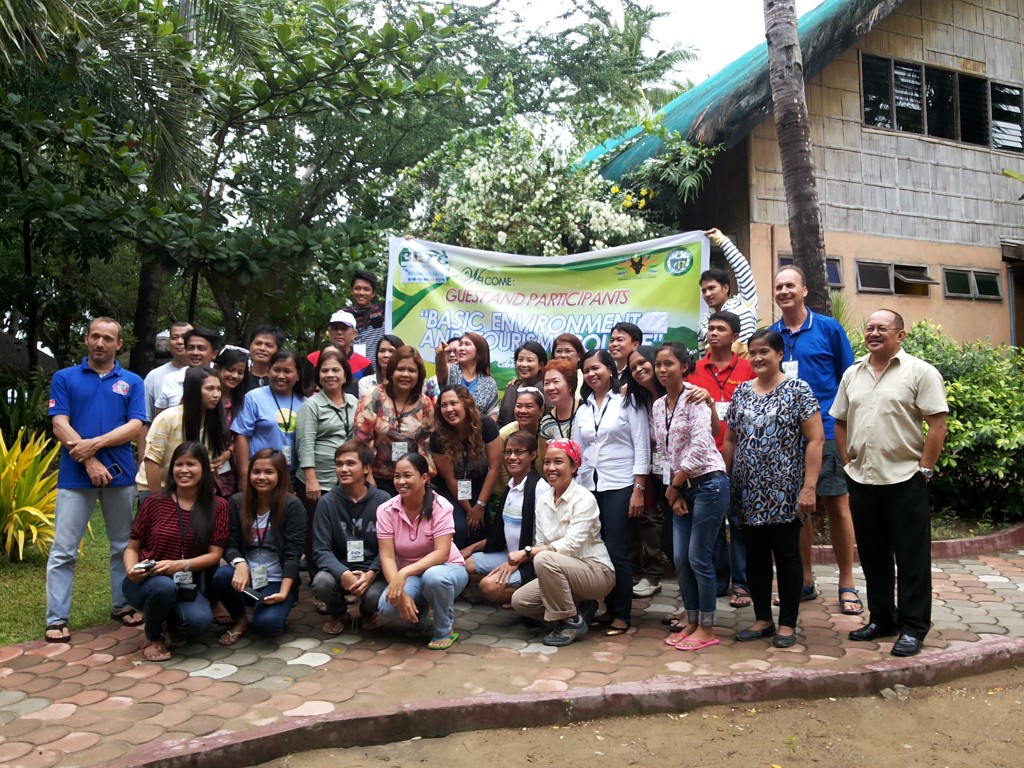
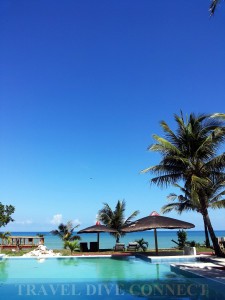
This trip went so far from the plan. It’s not just about staying in Occidental Mindoro longer and postponing the Coron leg as consequence. It’s also about a solo trip that wasn’t.
As soon as I stepped into Michael’s 4-wheel drive early Friday morning, it became a social adventure. For the first time in a long time, I shared my journey with kindred spirits.
I barely knew Michael and B but they felt familiar. Maybe it’s our age. Maybe it’s the timing – the coming together at this point in our lives. B is starting over; Michael is fighting to protect the reef; and me, I am struggling to raise Travel Dive Connect from its infantile stage. Poetic, ain’t it? One thing sure, it was a lot of fun!
The Last Schlummi
There was a long wait before we could venture into Apo Reef. From the Apo Reef Club, a dive resort in Calintaan, Occidental Mindoro managed by Michael, the reef was three hours away, out into the open sea. Badly timed trips can be… well, bad. My original group was supposed to dive Apo the day after I made it to Calintaan. That didn’t push through because of an LPA (low pressure area) and they left, one couple at a time, without diving the reef.
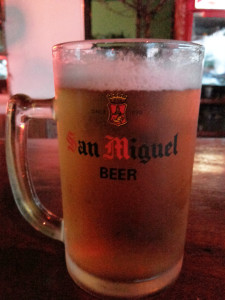
This was how I ended up being dive buddies with B, a Danish traveler introduced to me as “someone who can outdrink me.” I accepted the challenge, and – as expected – waved the white boozy flag on our first night at Apo Reef Club’s bar.
That was how it was during the wait. I brought work with me and filled my days with it. By 6 at night, B would be beside me at the bar for pre- and post-dinner drinks. Michael would join us most nights for his infamous “schlummi” – his term for one last drink, which didn’t always stick to just one.
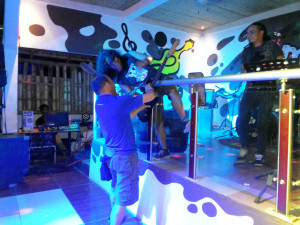
Our night out in San Jose, Occidental Mindoro was particularly memorable. We met R, a German medical practitioner who’d been in the province for more than 20 years. And, Michael let his hair down, which I only saw glimpses of at the resort. It was the schlummi’s fault – I loved it!
The Escape
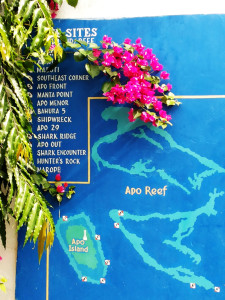
We didn’t really cut off until the boat left the resort’s shore for Apo Reef… ah, the trappings of today’s so-called connection. You could mark the exact moment. Michael and B let go of their devices. I just used mine to take pictures.
Before this, I was worried about making my deadlines. B would slip into thoughts about home and family issues every now and then. And, Michael was busy with the resort. An hour into our trip, we lost connection. No internet, no mobile, no problem!
Apo Reef III was our dive boat and home for the night. We “parked” in one of the dive sites within Apo Reef by securing the boat onto the site’s buoy. The reef protected us from the waves.
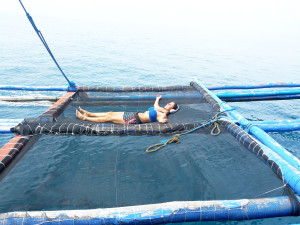
It was the most “macho” katig boat I’ve been on, by far. It had a dive area, with tanks and a compressor, a kitchen and dining area, sleeping quarters, fresh water shower, a charging nook, and a platform for barbecuing. There was a mesh/net over the katig’s frame, which was tough enough to carry our weight. We took turns sunbathing here while the sea rocked us to sleep. After dives, for meals and post-dinner drinks, we hung out at the dining area.
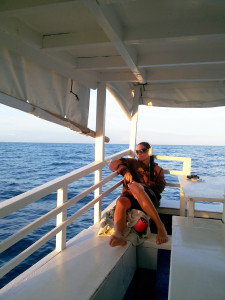
I had my alone time on the other end of the barbecue platform. There, while downing a couple more pale pilsens under a blanket of stars, I saw the explosive display of lights off illegal fishing boats just a few kilometers away. (True story. 😉 )
The Passion
Diving brought us here. And you could see it in our eyes; at our age and with at least a decade of diving behind us, we still loved every moment of it.
I remember how Michael shrieked at the sight of mobula rays, around 50 feet below us. (Yes, the visibility was that good.) We were already at the surface; while B lingered at 15 feet. I immediately grabbed my regulator, turned on the camera, and peeked back into the water. That was my first encounter with mobulas.
For me, it was great that we all still got so excited to see what we saw. We were just so happy to be there.
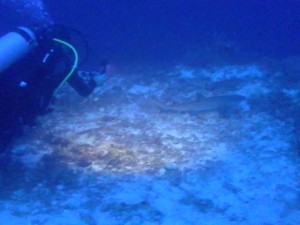
Apo Reef was teeming with my marine favorites: sharks and turtles. We did six dives over two days, and saw sharks and turtles in four. 20 sharks and 50 turtles, I’d say. That’s an overestimation, of course, but it felt that way. I loved it!
The Road Back
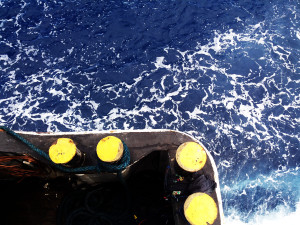
The trip back was personal. We had different destinations, different signposts of home.
For Michael, it was back to reality as soon as we hit Calintaan’s Bulaong Beach. He busied himself again with resort work. That night, it was about securing the dive boat and making sure his kids reached the resort safe for the weekend.
B once said: “I don’t envy him.” We were talking about Michael and the resort. However ideal it looked – a place on a beautiful beach and access to amazing diving any time you want – staying there and dealing with everything he’s had to meant that he really loved Apo Reef and Occidental Mindoro. You won’t endure almost a decade without love. I raise my glass of schlummi to you, Michael!
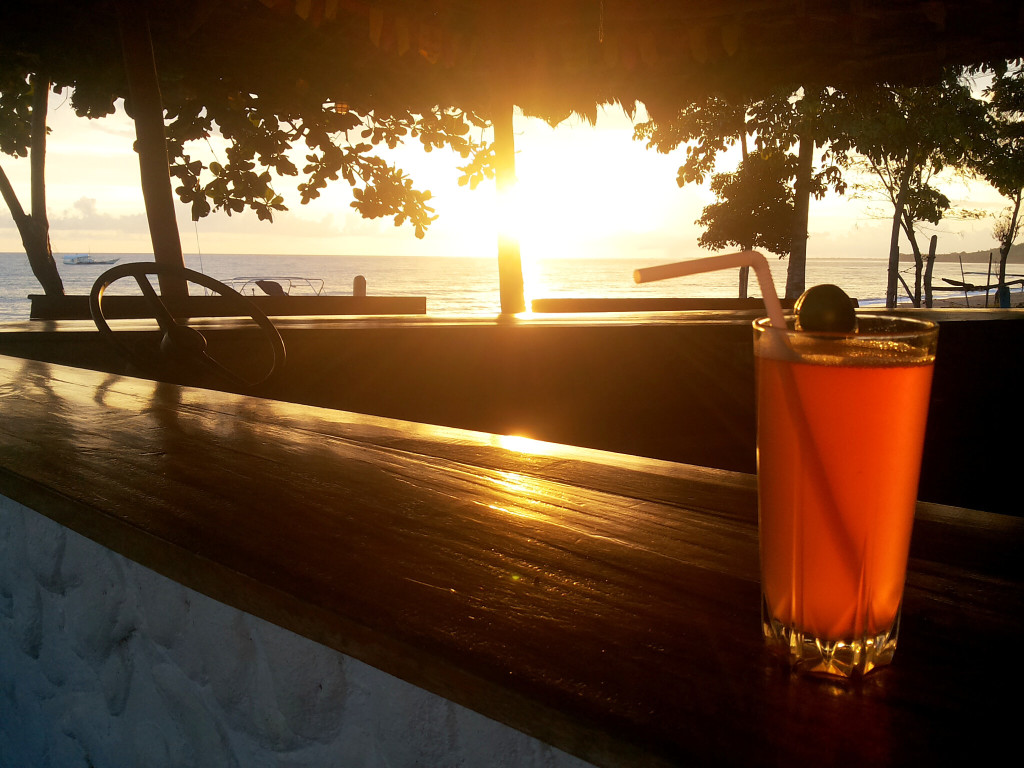
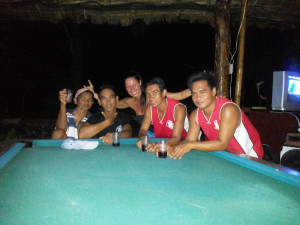
For B and I, the escape was extended. When we got to the beach, our favorite cocktail, The Roos, waited for us. The karaoke machine was turned on, playing Michael’s favorite song. R was there for some singing and drinking. A feast was prepared by Ivan, Apo Reef Club’s awesome cook. Everyone was in the mood for karaoke night.
We had time to freshen up in our bungalows. I was impressed to find mine with fresh sheets and towels, and the airconditioning already turned on. Kudos to the staff for their friendliness and attention to details!
B had a long way to go, almost 24 hours of travel before she reached home. I, on the other hand, decided to postpone the Coron leg so I could focus on what I found in Occidental Mindoro. When I planned the trip, I didn’t expect to find so much pressing issues. I thought it’d just be about saving sharks and seeing how climate change affected the reef. I was so wrong.
Michael took a quick break from the resort to see us on our way. The next night, we were back on the road to catch a boat to Batangas port and drive to Metro Manila. Michael was at the wheel, fighting off sleep with the most annoying “music” I’ve had to listen to. On the boat, we all slept in the car. I ventured out for a bit but, during night trips, the car’s seats were the coziest.
We made a couple of stops along the way. The first was at Sta. Cruz’s old bus stop, where one store operated 24/7. Here, we had instant coffee and some bread. Michael led in the local custom of dipping your bread in coffee. Very Filipino, I thought.
Next stop was at a McDonald’s along the South Luzon Expressway. On a dare, Michael approached the counter and ordered Chicken Joy. The guys in the next line muffled their laughter. I gave him an “I’m not worthy” bow.
Then, I was home. Back to work, back to my routine – my reality. I looked forward to it. B made it home safe, a few days after.
The Journey
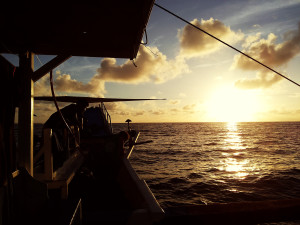
It is important that we do what we did/do, time and again. To travel and dive. To connect with strangers and other cultures. To seek out what we love whenever we can. You have to if you want to survive this crazy world. It is not really an escape. We would always come back.
For me, it is an emptying of self, where it’s just you and love. Sometimes, you do it alone. Other times, like my journey to Apo Reef, you get to share the experience with friends.

